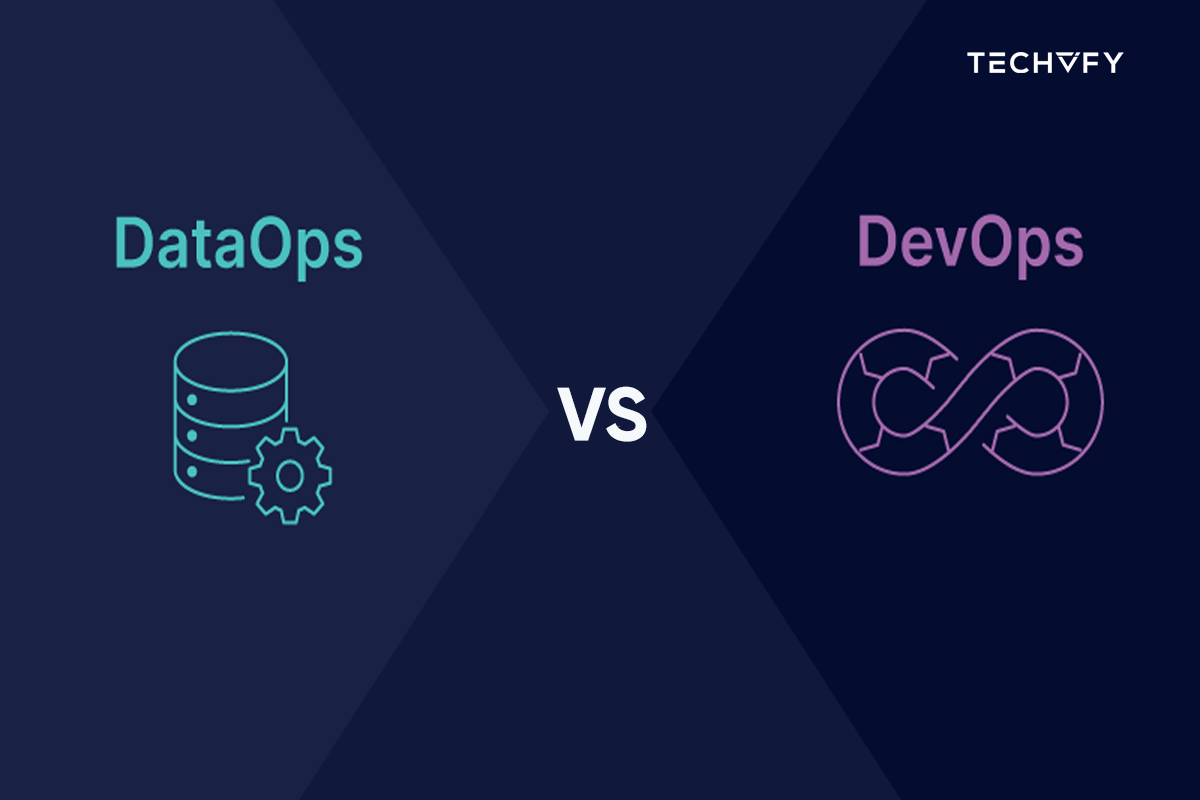Go vs. Node.js : Choose The Right Language
- David Ho
- 0 Comments
Picking the right technology stack for a new project is a tough decision for businesses and developers, especially regarding backend development. This involves a lot of work on APIs, libraries, managing data, and code that users need help seeing.
Two main programming languages are running for the lead role in backend development. You may know of Node.js, which brings JavaScript to the server side. Meanwhile, Google Go, or Golang, has been making waves in backend development, especially after big names like Uber started using it.
This article will dive into Go vs. Node.js, aiming to give you a clearer picture by discussing the Golang vs. Node.js speed and Go vs. Node.js performance, alongside the advantages and disadvantages of each. Also, highlight some major companies and apps that rely on them.
I. What is Golang?
Golang, also known as Go, is an open-source programming language developed by Google. It’s designed to be simple, efficient, and reliable, making it an excellent choice for various applications, from web development to cloud and networking services. Go’s design focuses on simplicity and ease of use, with syntax and features that allow developers to manage complex software with clarity and efficiency.
Features
- Simplicity and Readability: Go offers a clean and concise syntax emphasizing readability and ease of use.
- Concurrency Support: It features built-in support for concurrent programming, enabling efficient execution of multiple processes.
- Fast Compilation: Go compiles to machine code, ensuring quick compilation and execution times.
- Garbage Collection: Includes an automatic garbage collector to manage memory and prevent leaks.
- Standard Library: Provides a comprehensive standard library that covers a wide range of functionalities.
- Cross-Platform: Supports cross-platform development, allowing code to run on various operating systems.
- Static Typing: Utilizes static typing to catch errors at compile time, enhancing code safety and performance.

II. What is Node.js?
Node.js is an open-source, cross-platform JavaScript runtime environment that allows developers to execute JavaScript code server-side, enabling the development of scalable network applications.
Features
- Asynchronous and Event-Driven: Node.js uses non-blocking, event-driven architecture, making it efficient for building scalable network applications.
- Single Programming Language: It enables developers to use JavaScript on both the client and server sides, simplifying development processes.
- Vast NPM Registry: Offers access to a vast registry of libraries and tools through the Node Package Manager (NPM), enhancing functionality and reducing development time.
- Cross-Platform: Supports development across different operating systems, including Windows, Linux, and macOS.
- High Performance: Utilizes Google’s V8 JavaScript engine, optimizing execution speed and performance.
- Community Support: Benefits from a large and active community, providing a wealth of resources and support.
- Microservices Friendly: Ideal for building microservices architectures due to its lightweight and modular nature.

More software development-related articles:
III. Comparison Between Go vs. Node.js
| Feature | Node.js | Go |
| Programming Language | JavaScript | Go |
| Concurrency Model | Event-driven, non-blocking I/O model | Goroutines, built-in support for concurrency |
| Performance | High performance for I/O-bound tasks | Generally faster for CPU-bound tasks due to the compiled nature |
| Development Speed | Rapid development due to JavaScript’s flexibility and the vast NPM ecosystem | Fast compilation and execution speed but may have a steeper learning curve for those not familiar with static typing. |
| Use Cases | Web applications, real-time applications (e.g., chat apps, online gaming), server-side applications. | Systems programming, cloud services, high-performance and scalable web applications. |
| Community and Ecosystem | Large and vibrant community with a vast number of libraries and frameworks | Growing community, with a focus on simplicity and efficiency in development. |
| Error Handling | Callbacks and promises for handling asynchronous operations, can lead to callback hell if not managed properly | Explicit error handling which encourages developers to deal with errors as they occur. |
| Scalability | Highly scalable with its non-blocking architecture, suitable for applications that require real-time data processing. | Designed with concurrency in mind, making it inherently scalable for applications that benefit from parallel processing. |
| Learning Curve | Relatively easy for developers familiar with JavaScript and front-end development | May require learning a new syntax and understanding concurrency patterns but is straightforward for those with programming experience. |
1. Golang vs Node.js Performance Benchmark Comparison
| Performance Metric | Go | Node.js (Hypothetical) |
| Response Time | Faster due to compiled code and efficient concurrency model. | Slower compared to Go, as it runs on the V8 engine and handles requests asynchronously. |
| Throughput | Higher, benefits from native goroutines allowing more efficient CPU utilization for concurrent tasks. | Lower than Go for CPU-bound tasks but highly efficient for I/O-bound tasks due to its non-blocking I/O model. |
| Latency | Generally lower, especially in services where concurrent requests are common. | Can be higher, particularly under heavy computational load, but performs well in I/O-bound operations. |
2. Go vs Node.js: Pros and Cons
Pros of Go
- Efficient Concurrency: Features built-in support for efficient parallel execution with goroutines and channels.
- Fast Compilation and Execution: Delivers quick compilation and execution, enhancing developer productivity.
- Strong Standard Library: Provides a comprehensive standard library, reducing the need for external packages.
- Static Typing: Utilizes static typing to catch errors early, improving code reliability.
- Garbage Collection: Includes automatic memory management to prevent leaks and optimize resource use.
Cons of Go
- Lack of Generics (until recently): Historically lacked generics, making code reuse more challenging, though this has been addressed in recent updates.
- Verbose Error Handling: Requires explicit error handling, which can lead to more verbose code.
- Limited Third-Party Libraries: Has a smaller ecosystem of third-party libraries compared to more established languages.
- Learning Curve for Concurrency Model: The unique concurrency model may present a learning curve for new users.
- Interface Type System: The interface system can be less intuitive for those used to traditional object-oriented programming.
Pros of Node.js
- Unified Codebase: Node.js enables using JavaScript for both client and server sides, streamlining development workflows.
- Robust Ecosystem: It boasts one of the largest ecosystems, offering extensive libraries and tools through NPM.
- Streamlined Data Streaming: Node.js excels in efficiently handling data streaming tasks for applications requiring large data transfers.
- Rapid Prototyping: Its simplicity and speed make Node.js ideal for quickly developing and testing prototypes.
- Seamless JSON Support: Offers excellent support for JSON, making it perfect for building RESTful APIs and web services.
- Corporate Adoption: Widely adopted by major corporations, showcasing its reliability and performance for enterprise applications.
Cons of Node.js
- Callback Hell: Complex nested callbacks can lead to difficult-to-maintain code, known as “callback hell,” though promises and async/await help mitigate this.
- Performance Bottlenecks with CPU-Intensive Tasks: Not as efficient for CPU-heavy operations due to its single-threaded nature.
- Inconsistent API: Some Node.js APIs are unstable and can change, leading to potential issues with backward compatibility.
- NPM Dependency Issues: The vast number of packages can lead to dependency management issues and potential security vulnerabilities.
- Learning Curve for Asynchronous Programming: Asynchronous programming model can be challenging for developers new to the concept, requiring a shift in thinking.
IV. Which one to choose: Go vs. Node.js
Choosing between Go (Golang) and Node.js for a project depends on several factors, including the specific requirements of the project, performance needs, developer expertise, and the nature of the tasks at hand. Here’s a breakdown to help guide the decision:
1. When to Choose Go
High-Performance Applications
If your application demands high performance and efficient processing, Go’s concurrency model and fast execution make it a superior choice, as highlighted in Golang vs Node.js performance benchmarks.
Microservices Architecture
For projects that benefit from a microservices architecture, Go’s lightweight nature and efficiency in handling concurrent tasks make it ideal.
Network Services and Systems Programming
Go is well-suited for building network servers, data pipelines, and other systems-level programming tasks due to its performance and simplicity.
Scalable, Distributed Systems
The language’s design for concurrency, along with its simplicity and efficiency, makes Go a strong candidate for scalable and distributed systems.

2. When to Choose Node.js
Real-Time Applications
Node.js is an excellent choice for real-time applications like chat applications or live updates in web applications due to its event-driven nature and non-blocking I/O.
Full Stack JavaScript Development
If your team is proficient in JavaScript, choosing Node.js allows for a unified language experience across both the client and server sides, simplifying development.
Rapid Development and Prototyping
The vast number of libraries available through NPM can speed up development and prototyping, making Node.js a good choice for startups and projects under tight deadlines.
I/O Bound Applications
For applications that are not CPU-intensive but require a lot of I/O operations, such as web APIs or services, Node.js’s non-blocking I/O model offers efficiency and speed.
Conclusion
The decision between Go vs. Node.js comes down to what your project needs, how fast you need things done, and what your team knows best. Go is great for when you need things to run quickly and smoothly, especially for big projects that need to scale. Node.js is your go-to for making things happen in real-time and getting projects off the ground quickly, thanks to its huge library of tools.
Choosing the right tool matters a lot for your project’s success. If you’re looking for some help, TECHVIFY has got your back with expert Go and Node.js development services. Our team is here to guide you through your options and get your project done right. Reach out to TECHVIFY today for all your Go and Node.js needs.
Please feel free to contact us for a free consultation: Software Development Services





